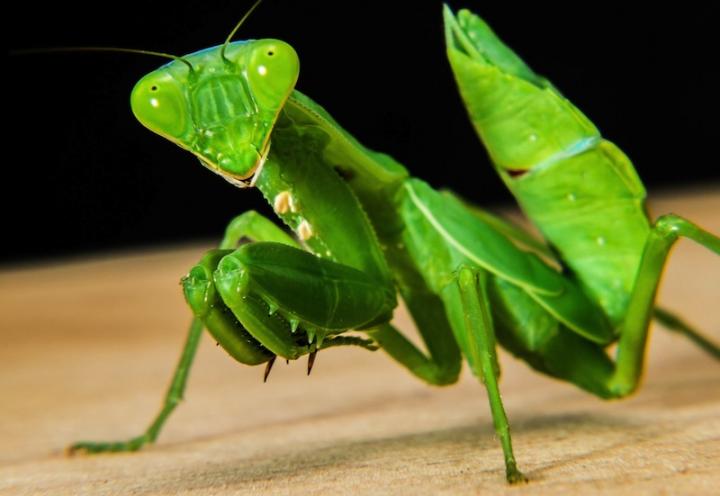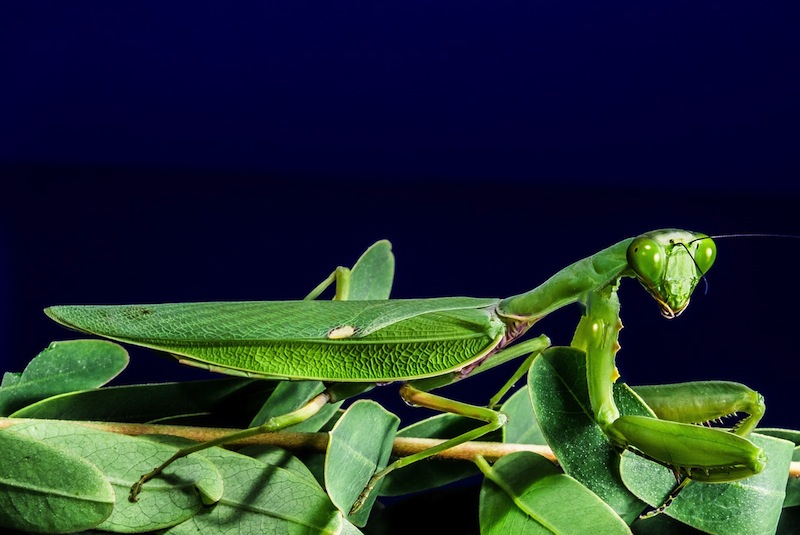
The praying mantis is a beneficial insect that preys on bothersome insects. Explore praying mantis facts and folklore, and learn why you should have them in your garden.
What Do Praying Mantis Eat?
- Praying mantis dine primarily on insects like flies, crickets, moths, and mosquitoes.
- Because of their voracious appetite for insects, praying mantis are considered a friend to farmers and gardeners as a natural form of pest control.
- Although they may eat other beneficial insects (and, occasionally, each other), their preference is for the sucking and cutting insects that do the greatest damage to crops.
Praying Mantis Facts
- Most praying mantis are able to fly, although some females might not be able to.
- Mantis have giant, triangular heads with large, compound eyes.
- Their long, flexible necks bend easily, allowing them to turn their heads 180° from side to side, giving them a 300° field of vision. They can spot the slightest movement from 60 feet away.
- The strange praying stance is not an act of reverence but instead the position the fierce predators take while waiting to ambush other insects.
- Their powerful forelegs are armed with rows of overlapping spikes to hold their prey while they devour it with strong, sharp mandibles.
- Masters of disguise, praying mantis are typically green or brown, but many species will take on the color of their habitat. They may mimic leaves, twigs, grass, and even ants; some tropical species so closely resemble flowers that other insects will land on them in search of nectar.
- Female praying mantis sometimes eat their mates.
- Praying mantis are found on every continent except Antarctica. Of the 1,800 or so known species, most are between 1–3 inches in length. Some tropical ones may grow to 8 inches or more and can occasionally add hummingbirds to their diet.

Praying Mantis Folklore
- The French once thought that a mantis would point a lost child home.
- In some parts of Africa, it is considered good luck if one of these curious creatures lands on you.
- The Greek word “mantis” means prophet or seer. Because of the way the insects hold up the fronts of their bodies and position their huge forelegs when at rest, it appears as though they are praying.
As with many of nature’s predators, the hunters often become the hunted. Mantis’ natural enemies include birds, bats, spiders, snakes, and lizards. With so many enemies to worry about, perhaps the praying mantis actually are saying their prayers!
Find out about other fascinating and beneficial insects like fireflies and dragonflies.







